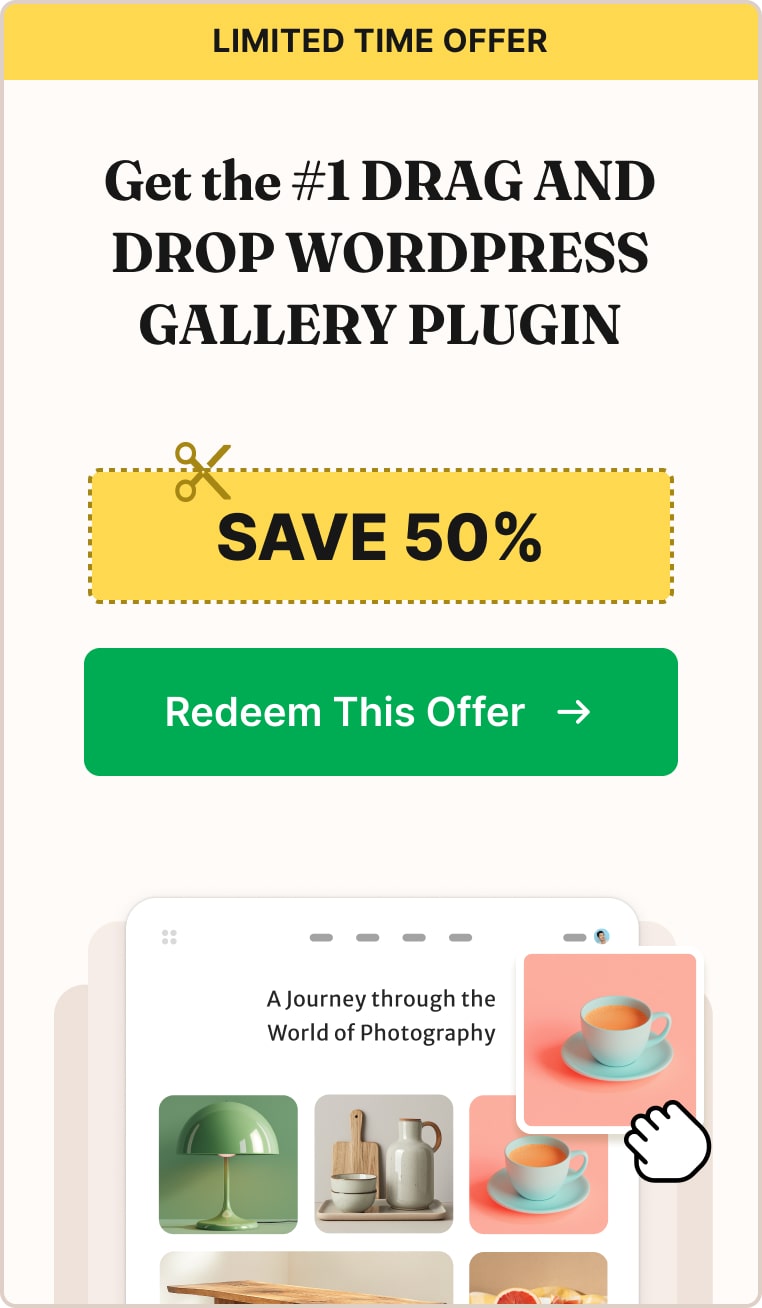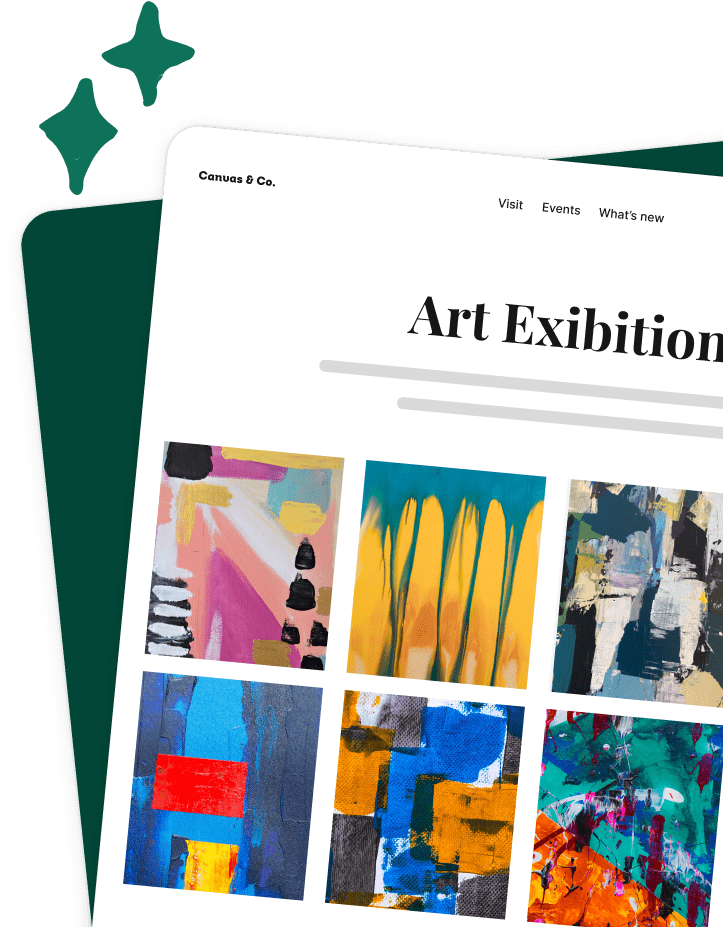The competition is high, it’s hard to stand out, and the pressure is on, which means learning how to build a brand on social media that’s successful is more important than ever. Billions of people use Facebook, Instagram, Twitter, and other social media platforms every day. Billions!
With so many businesses vying for attention online, a well-defined and recognizable brand identity can set you apart. Plus, a compelling social media presence boosts visibility, fosters engagement, builds customer loyalty, and drives conversions.
In this guide, we’ll walk you through the essential steps to build a brand on social media. Whether you’re a small business owner, a photographer, or a content creator, these strategies will help you establish a memorable brand that resonates with your audience and stands out in the crowded world of social media.
How to Build a Brand on Social Media
Define Your Brand Identity
Before you can effectively build a brand on social media, it’s crucial to define what your brand stands for.
What is Brand Identity?
Brand identity is how a brand presents itself to the world and how it wants to be perceived by its audience. On social media, this includes your brand’s mission, vision, values, voice, and visual elements. Take, for instance, Duolingo, which has effectively built a recognizable brand on social media through quirky, consistent messaging and distinctive, funny visuals featuring their logo’s green owl.
Your brand identity is made up of several key elements:
- Mission and Vision: What does your brand aim to achieve, and what values guide its journey? A clear mission statement and vision provide direction and purpose, helping you craft content that aligns with your brand’s core values.
- Brand Voice and Tone: How does your brand “speak” to its audience? Whether it’s professional and informative or friendly and conversational, maintaining a consistent voice and tone helps your audience connect with your brand on a personal level.
- Visual Elements: Your logo, color scheme, fonts, and imagery all contribute to your brand’s visual identity. Consistent visuals across your social media profiles reinforce brand recognition and make your content instantly recognizable.
To define your brand identity on social media, start by asking yourself these questions:
- Who is my target audience? Understand their demographics, interests, and pain points to tailor your content to their needs.
- What is my unique selling proposition (USP)? Identify what sets your brand apart from the competition and emphasize this in your messaging and visuals.
- How do I want my audience to feel when they interact with my brand? Define the emotions you want to evoke through your content and engagement strategies.
By answering these questions, you’ll be able to create a clear and cohesive brand identity that resonates with your audience and builds trust. For example, Jana Williams Photography, a small business run by a professional photographer, has successfully built a strong photography brand on social media by focusing on elegance, timeless beauty, and a personal connection with her audience.

Jana consistently uses a warm, welcoming brand voice that reflects her mission to capture moments of love and joy, along with bright, airy wedding photography that has a soft, romantic aesthetic. She engages with her followers by sharing behind-the-scenes content, offering tips, and responding to comments and messages, creating a strong sense of community and trust among her followers.
“Brand identity is highly important and it requires making smart choices and ingenious planning. Still, if you build it successfully, there’s nothing that can replace it.”
– Amanda Sparks, head of marketing at EssaySupply
Choose the Right Social Media Platforms for Your Brand
Not all social platforms are created equal, and selecting the ones that align with your brand’s goals and audience can make a significant difference in your social media strategy’s effectiveness.
Consider Your Audience and Content Type
Start by understanding where your target audience spends their time online. Different demographics prefer different platforms, and the type of content that performs well can vary significantly:
- Instagram: Ideal for visually-driven brands, such as photographers and creative small businesses. Instagram allows you to showcase high-quality images, videos, and stories that reflect your brand’s aesthetic. Features like Instagram Reels and IGTV provide opportunities for more dynamic content.
- Facebook: A versatile platform suitable for businesses targeting a broad demographic. It supports various content types, including text, photos, videos, and links, and offers tools like Facebook Groups and Events to foster community engagement.
- Pinterest: Great for businesses that can leverage visual content, like photographers, interior designers, and DIY brands. Pinterest is a powerful tool for driving website traffic and offers the advantage of long-lasting content discoverability through pins.
- LinkedIn: Best suited for B2B brands or those aiming to build professional authority, LinkedIn allows you to share industry insights, company news, and professional achievements, helping you connect with other businesses and professionals.
- TikTok: A rapidly growing platform that offers immense potential for brands willing to create short, engaging, and often entertaining video content. It’s particularly effective for reaching a younger demographic.

When choosing social media platforms, it’s essential to consider how you can seamlessly integrate your content across different channels. For example, if you’re using Instagram to showcase your photography, you can use Envira Gallery to connect your Instagram to WordPress, allowing you to display your Instagram posts in a beautiful gallery on your website.
Match Your Content to the Platform
Each platform has its strengths, and your brand strategy should leverage these to maximize impact:
- Visual Content: If your brand relies heavily on visuals, like a photography business, platforms like Instagram and Pinterest will allow you to showcase your work most effectively. Ensure your visuals align with your brand identity, using consistent color schemes and styles.
- Educational Content: For brands that provide valuable insights or how-to guides, platforms like LinkedIn, YouTube, or even Facebook can be more effective, where longer-form content and videos are more appreciated.
- Engaging and Interactive Content: Platforms like Instagram Stories, TikTok, and Facebook provide great opportunities for interactive content, such as polls, Q&As, and live videos, which can increase engagement and build a closer connection with your audience.
Tools for Choosing the Right Platforms
Utilize analytics tools and audience research to determine where your target demographic is most active. Tools like Google Analytics, Facebook Audience Insights, and Instagram Analytics can provide valuable insights into your audience’s behaviors and preferences.
Additionally, consider the type of content you’re most comfortable creating and where that content is most likely to perform well. This strategic approach ensures your efforts are focused on the platforms that’ll yield the best results for your brand.
Create Consistent and Engaging Content on Social Media
After defining your brand identity and selecting the right social media platforms, the next step is to create content that is both consistent and engaging. Consistency helps reinforce your brand identity while engaging content fosters interaction and loyalty among your audience.
Maintain Consistency Across All Platforms
Consistency is key when building a recognizable brand. When you think about Coca-Cola, you’re thinking red, right? Do you instantly see the cursive letters? Do you remember one of the “Share a Coke” commercials and smile? That’s what you want to achieve with your brand.
Ensure that your content aligns with your brand’s visual style, voice, and messaging on all platforms:
- Visual Consistency: Don’t go changing templates, colors, or typography because you see something new you like. Use a uniform color palette, font, and style across all posts. This makes your content easily recognizable and strengthens brand recall. Tools like Canva and Adobe Spark can help you maintain a consistent look.
- Brand Voice and Tone: Your brand’s voice should remain consistent across all posts, whether you’re sharing a fun Instagram Story or a professional LinkedIn update. Define your brand’s tone—be it friendly, formal, or playful—and stick to it.
- Content Schedule: Develop a content calendar to plan and schedule your posts in advance. This ensures a steady flow of content and helps avoid last-minute rushes. Tools like Buffer, Hootsuite, or Later can help streamline this process and maintain regular posting frequency.
Focus on High-Engagement Content Types
Engaging content keeps your audience interested and encourages them to interact with your brand. Focus on content types that have proven to generate high engagement:
- User-Generated Content (UGC): Encourage your followers to create content related to your brand, such as photos, videos, or testimonials. Share this UGC on your channels to build community and trust. A branded hashtag campaign can be an effective way to promote this.
- Behind-the-Scenes Content: Share a glimpse behind the scenes of your business or creative process. This type of content humanizes your brand and builds a deeper connection with your audience by showing the people and effort behind the brand.
- Interactive Content: Create polls, quizzes, and Q&A sessions to engage your audience directly. Interactive content not only boosts engagement but also provides valuable insights into your audience’s preferences and interests.

To ensure your photos are not only stunning but also well-organized and easily shareable, consider using Envira Gallery for your WordPress website. Envira Gallery allows you to create beautiful, responsive photo galleries that can be easily embedded into your website and shared across your social media platforms.
Write Simple & Straightforward Posts
Even though your visual content is critical, the accompanying text is also important in capturing your audience’s attention. Social media posts should be clear, concise, and engaging to ensure they effectively communicate your message.
Best Practices for Writing Social Media Posts
- Keep it Short and Sweet: Ensure your message is clear and to the point. Use concise language that conveys your message quickly, as users often scroll quickly through their feeds.
- Minimize Text on Images: Images should primarily showcase your photography or brand visuals, with minimal text overlay.
- Proofread: Spelling or grammatical errors can make your brand appear unprofessional. Use tools like Grammarly to check for mistakes before posting.
Simple, error-free posts ensure clarity and professionalism, making your content more likely to be shared and engaged with by your audience.
4. Leverage Analytics to Optimize Content Strategy
To continuously improve your content strategy, use social media analytics to measure performance and adjust accordingly:
- Track Key Metrics: Monitor engagement rates, likes, shares, comments, and follower growth to gauge which content types perform best. This data can help you refine your content strategy and focus on what resonates most with your audience.
- Experiment with Content Formats: Don’t be afraid to test different content formats to see what works best for your brand. Whether it’s video content, carousel posts, or infographics, experimentation can provide insights into new ways to engage your audience.
- Adapt Based on Feedback: Pay attention to feedback from your audience in comments and messages. Use this feedback to adjust your content and better meet the needs and expectations of your followers.
By creating consistent and engaging content tailored to your audience’s preferences, you can strengthen your brand’s presence on social media, foster deeper connections with your followers, and drive better results.
Boost Your Brand on Social Media with Advanced Strategies
Incorporating advanced strategies like collaborating with influencers, running giveaways, and using smart boosting techniques can significantly enhance your brand’s visibility and engagement.
Collaborate with Influencers
Influencers, whether they’re make-up artists, fashion bloggers, musicians, or local business owners, have a powerful presence on social media. Partnering with influencers who align with your brand can expose your content to a larger, more targeted audience.
Influencers have the trust and attention of thousands, if not millions, of followers. By collaborating with them, you can tap into their established audience and gain credibility through association.
Offer to provide free services or products, like photoshoots, in exchange for exposure. The influencer can tag your business in their posts and encourage their followers to check out your profile. This can be especially effective for photographers, as high-quality visuals are always in demand.
For example, a photographer could partner with a local lifestyle influencer to do a fashion photoshoot. The influencer shares the photos, tags the photographer, and encourages followers to book similar shoots, driving traffic and potential clients to the photographer’s social media pages.
Run a Giveaway
Giveaways are an excellent way to increase engagement, attract new followers, and promote your brand organically. People love freebies, and a well-planned giveaway can generate significant buzz around your brand. It’s a very cost-effective way to promote your services and gain new followers.
- Announce the Giveaway: Let your audience know what you’re giving away (e.g., a free photoshoot session). If you’re a WordPress user, check out RafflePress to run viral social media giveaways through your website.
- Set Participation Rules: Ask participants to like your page, share the giveaway post, tag friends in the comments, or use a specific branded hashtag. These actions can increase visibility and attract new followers.
- Promote Widely: Use your social media channels to promote the giveaway and encourage existing followers to share it to reach a broader audience.

Use Smart Boosting Techniques
Paid promotions, such as boosted posts, are a cost-effective way to increase the reach of your content on social media. However, to maximize ROI, it’s essential to boost strategically.
- Select the Right Post: Choose a high-performing post or one that aligns with a specific marketing goal, such as promoting a new service or event.
- Define Your Target Audience: Use targeting options to reach a specific demographic that aligns with your brand’s audience.
- Set a Budget and Duration: Determine a budget that aligns with your goals and select a timeframe that ensures maximum visibility.
Avoid boosting every post. Instead, focus on promoting content that drives engagement or conversions. Over-promotion can lead to ad fatigue and reduce the effectiveness of your campaigns.
“I hate it when I see one and the same sponsored ad over and over again. It makes me want to block that page. People need to find a balance in advertising their brand on social media- that’s the key to a successful online campaign.”
– James Daily, marketing expert at FlashEssay
Building a brand identity on social media is a complex task that requires planning and hard work. You need to fight for your place in the spotlight, but once you have it under your belt, you can grow your business exponentially.
Social media branding requires a strategic approach that encompasses defining your brand identity, choosing the right platforms, creating consistent and engaging content, and leveraging advanced strategies to boost your visibility. By understanding your audience and tailoring your content to fit each platform, you can create a cohesive and impactful presence that resonates with your followers.
Remember to stay true to your brand’s values while continuously adapting to new trends and audience preferences. Experiment with different tactics, monitor your performance, and be prepared to evolve your strategy over time.
We hope this article helped you learn how to build a brand on social media. Ready to create a website for your photography business? Check out How to Make a WordPress Photography Website in 5 Easy Steps.
Not using Envira Gallery? Get started today!
Don’t forget to check out our blog and follow us on X (Twitter) for the best photography tips, resources, and WordPress tutorials.
















